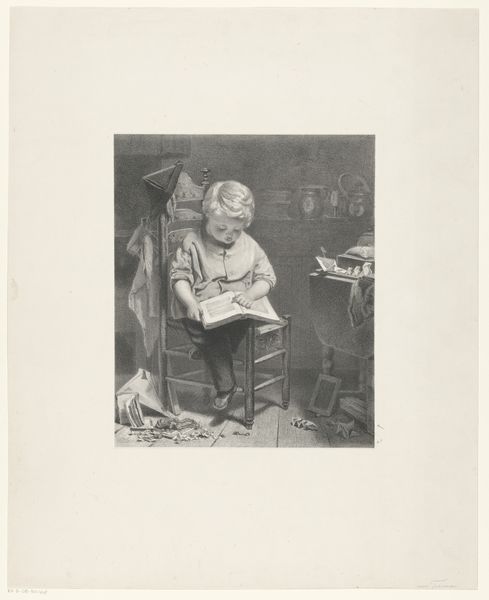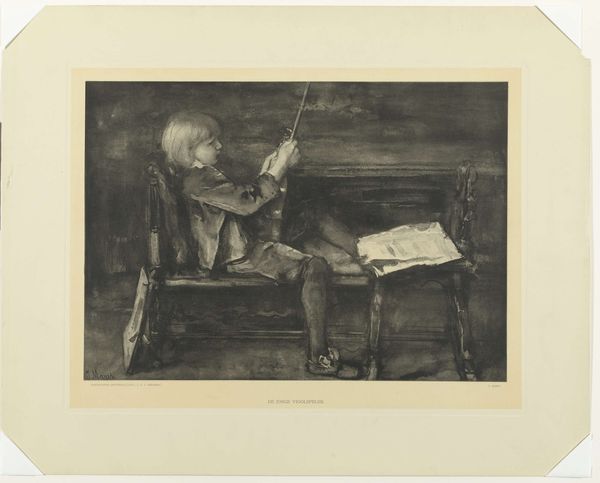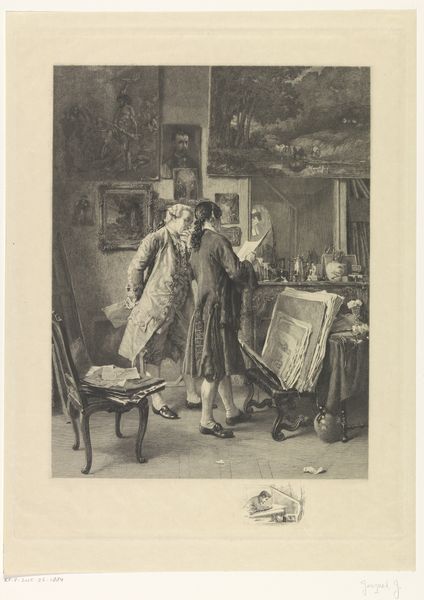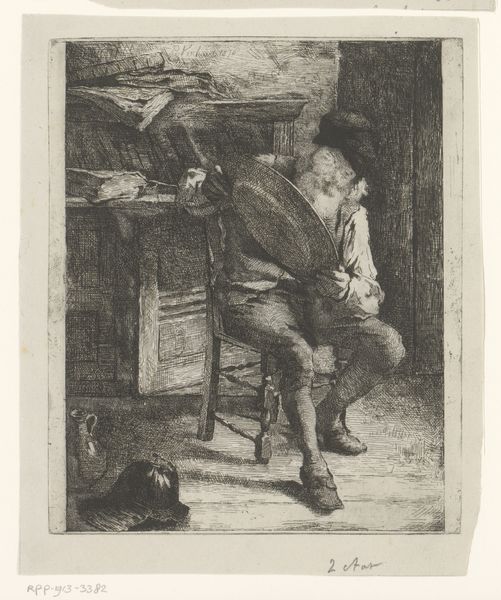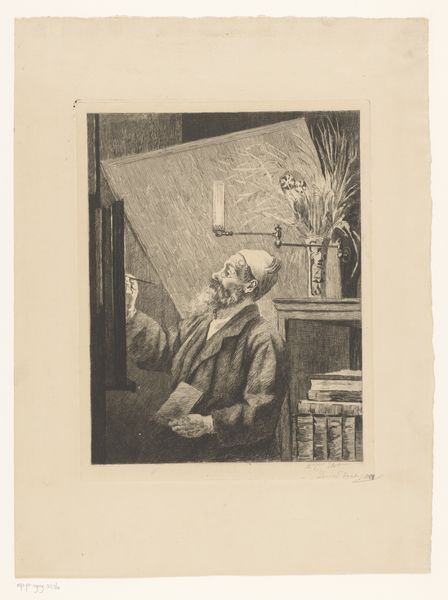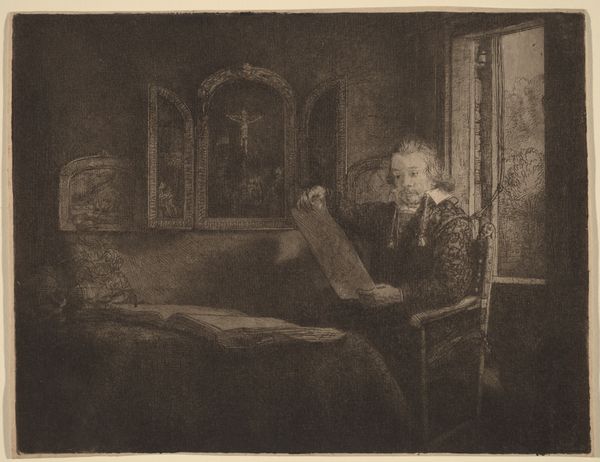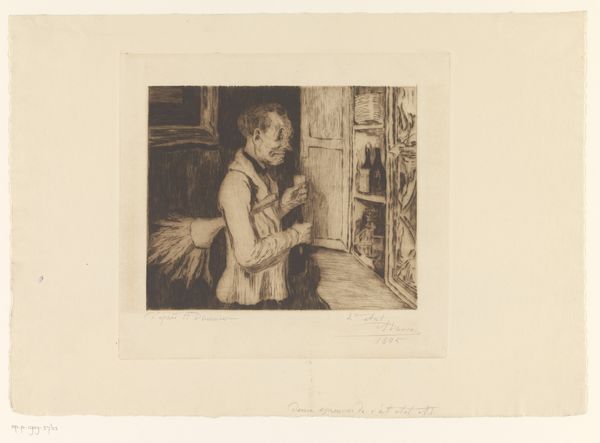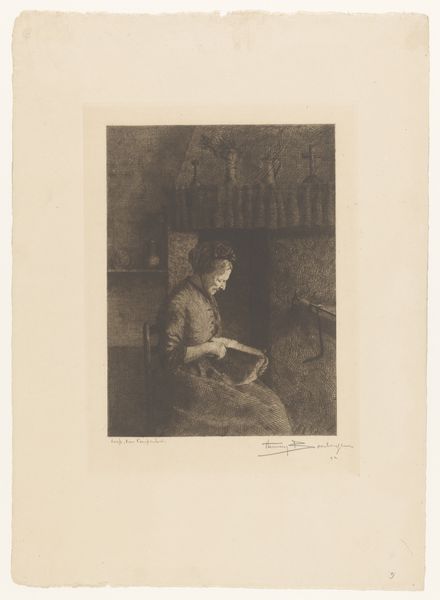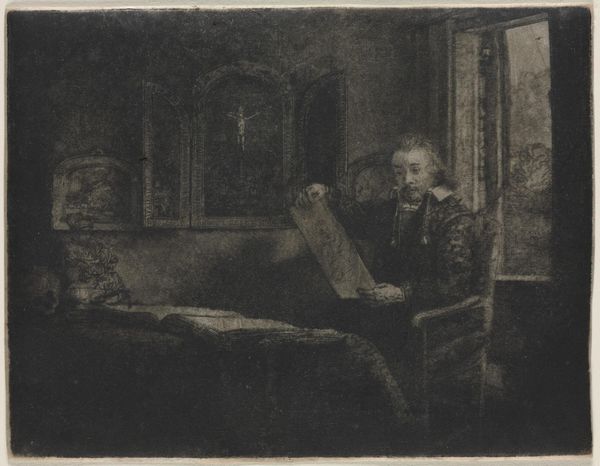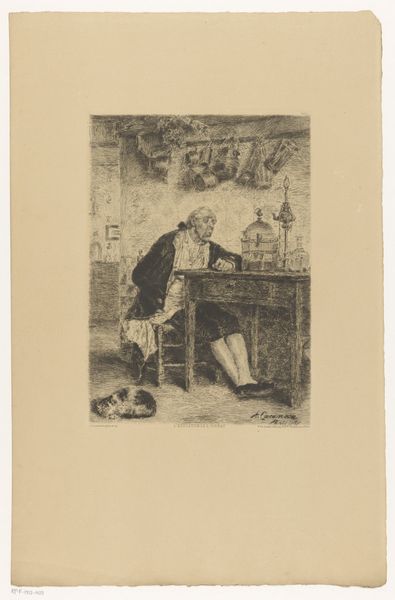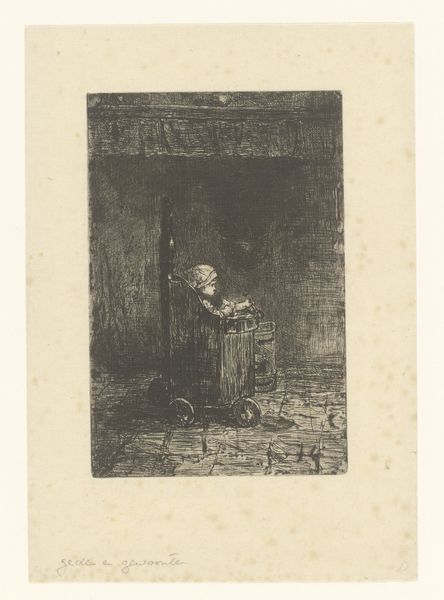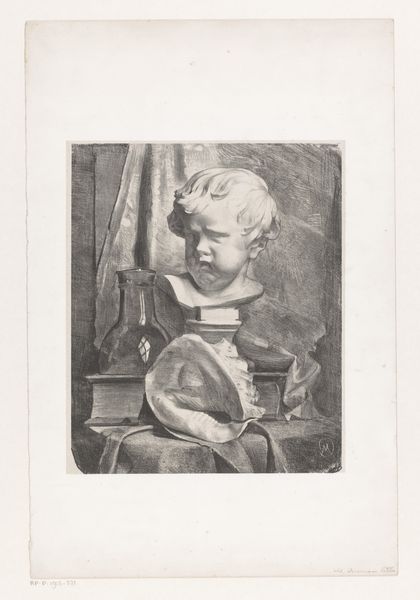
drawing, print, etching, ink
#
portrait
#
print photography
#
drawing
# print
#
etching
#
figuration
#
ink
#
genre-painting
#
academic-art
#
realism
Dimensions: height 676 mm, width 396 mm
Copyright: Rijks Museum: Open Domain
Curator: What we have here is "Jonge vioolspeler" by Willem (I) Steelink. The etching dates from sometime between 1866 and 1895. Editor: There's something so intimate and vulnerable about this. He’s completely absorbed in his music, unaware of us watching. It’s more than just a snapshot; there's a narrative pull. Curator: Steelink was clearly working within the tradition of academic art while simultaneously exploring the genre painting, capturing a quiet moment from everyday life with careful realism. Editor: Realism indeed. Look at the boy’s posture, slightly slumped, yet his focus is intense. You can almost hear the hesitant, sweet notes of a practice session, punctuated by the scrape of bow on string! Curator: Exactly. What makes this work interesting is how Steelink uses the print medium to engage with contemporary social interests. Musical education for children, particularly in well-to-do families, became increasingly common. Images like this circulated as status symbols and reflections of bourgeois values. Editor: Do you think he felt pressured? Looking at this I see the isolation of practice, the demands perhaps? It makes you wonder if it was all joy and accomplishment. I imagine the late nights… the screeching sounds bothering neighbors. Curator: Such scenes also carried the weight of expectation. To master the violin was, in many ways, to demonstrate discipline, intellect, and cultural refinement - ideals promoted by the establishment of art institutions, academies and music programs alike. The circulation of this print, therefore, bolsters this societal view. Editor: All of that, yes. But beyond context, it reminds me of myself. All those years of rehearsals that finally, occasionally culminated in moments of soaring… and freedom. Thanks, young musician, for reminding me what really matters. Curator: An intimate glimpse of childhood and societal expectations all in one – a rather brilliant example of the tensions in nineteenth-century artistic and cultural production.
Comments
No comments
Be the first to comment and join the conversation on the ultimate creative platform.
